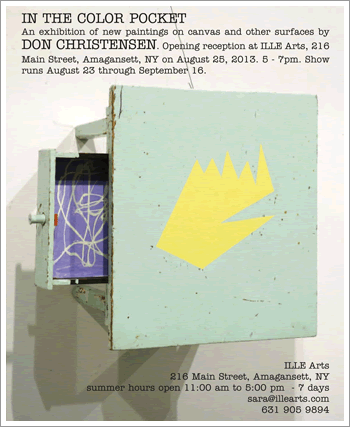
» Pocket Geometry, Don Christensen
Ille Arts,
BLINK, Saturday, September 14, 2013
******
» Artists Choose Artists, Parrish Art Museum
******
IN THE COLOR POCKET
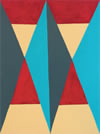 An exhibition of new paintings on
canvas and other surfaces by
DON CHRISTENSEN
An exhibition of new paintings on
canvas and other surfaces by
DON CHRISTENSEN
Ille Arts is happy to present Don Christensen’s most recent work. Christensen, a musician and composer as well as a visual artist has exhibited work numerous times over the last 20 years in New York, Brooklyn, and Miami. The exhibition of will open August 25, 2013.
Painting on canvas, wood, table tops, step stools, and incorporating a miscellany of found objects, it is obvious that Christensen believes that the world would be a better place enlivened by a coat of many colors. His boldly delineated patterns are often presented against a plain monochromatic ground and a visual movement is created through the syncopation of clear shape and pure color - the interplay of their advancement and recession is like a series of drumbeats on the eye. He is an unapologetic advocate of the retinal and is a color, shape and rhythm kind of guy who is into materials and materiality and favors the aesthetic of the improvised and the handmade.
“The sense of play in Christensen’s work is contagious. The work gives rise to
the notion that it is perfectly okay to let yourself run wild and not worry about
the outcome. Christensen makes it seem like everyone, inherently, has the
ability to do so. The experienced eye knows though, that this 'Look Ma, no
hands!' effect is, in fact, hard won.”
–Joan Waltemath, artist and writer
Curator and critic Lily Wei writes “In this recent series of works, Christensen has unleashed a remarkable range of brilliant, saturated colors that could, it seems, give off light in a blackout.”
For more information, please contact: Sara De Luca at sara@illearts.com or 631 905 9894.
Installation Views: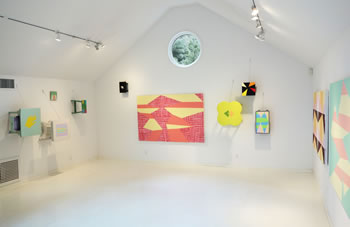
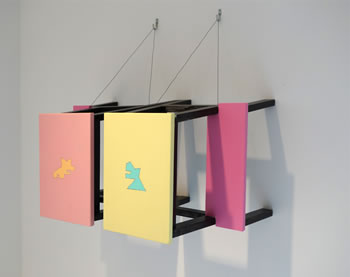
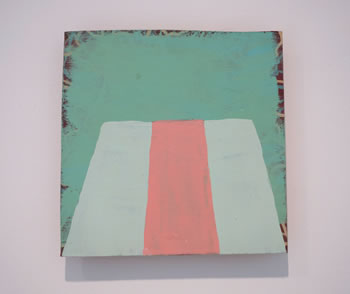
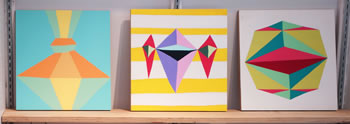
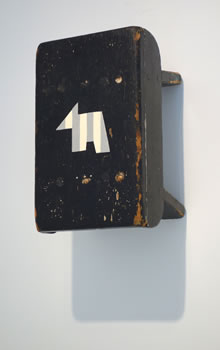
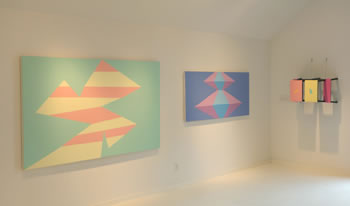
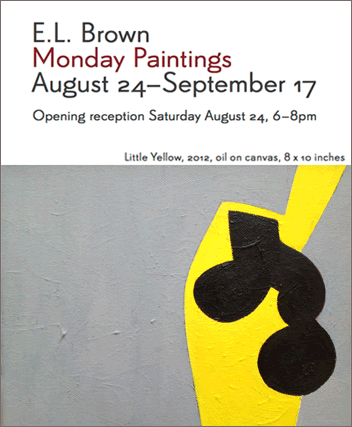
MONDAY PAINTINGS - E.L. Brown
Essay by Douglas Crase
E. L. Brown was in his teens when painting died for good in 1986. Like others of his generation, he seems to have missed the funeral. The resolute but expressive abstractions in this, his first solo exhibition, result from a passionate discipline of the kind we attribute to a more innocent era. He has followed that discipline now for twenty years, the past eleven in the privacy of his upstate studio. He is no art-world recluse. But thanks to his quiet practice, Brown’s compact yet expansive oils will come as a surprise even to those who know him well. They are a surprise such as poet James Schuyler liked to describe: a break in the weather, “as lovely as though someone you knew all your life / Said the one inconceivable thing and then went on washing dishes.” The artist returns to his accustomed routine. The rest of us won’t see the world quite the same again.
Brown calls his exhibition “Monday Paintings,” a title that belies his continuous practice and intimate involvement with some very resilient traditions in modern art. As a student, he cooperated in a video with Ati Gropius; his arresting Tree Museum may thus call to mind the Bauhaus dictum that art’s final goal is architecture. In his twenties he was studio assistant to Nell Blaine and heir to the training of her teacher, Hans Hofmann, who taught the self-correcting dynamism of his famed “push and pull.” Brown has resolved those traditions in works that adhere to their own physics even as they break free in measured ecstasies. Witness the incandescent yellow that prevents the collapse of Tree Museum, or the striped revelation that unites the conjugating forms of Small Hunch.
Presented with such self-sufficient abstractions, a conscientious viewer might wish to emulate the saintlier formalists who assure us they can look at art without seeing an image. For most of us, it can’t be done. The very facture on canvas (the volume of paint, pentimenti, traces of masking or overspray) amounts to a visual record of the feelings if not ideas that produced the pictures. Because Brown’s canvases are modestly sized. He can also turn them sideways or upside down as he works. He gets lost in the painting. But think, by analogy, what this means: it’s the artist doing with the torso of the mind what Pollock did with the body when he laid a painting on the floor and approached it passionately from all sides. For the viewer who isn’t phobic of images, the procedures of the artist translate into unexpected gains in contemplative scale.
Critics sometimes lament an absence of devotion in artists of our day. They may be polling the wrong sample. Brown showed keen insight by calling his exhibition “Monday Paintings.” Monday is the day the galleries are closed. In the art world, the rattle of commerce settles briefly out of the air. “Mondays are blissful,” says the artist, referring to life in his studio. “Things are quiet in the village, neighbors are working.” A church bell rings the hour and the school bus brings the children home at three. No wonder it’s his favorite day to paint. A great deal of text has been expended to promote art that evades our market-driven economy. But contemplation is a simpler antidote to greed. One doesn’t need to travel, or attach a gymnasium to the side of the house, to display and observe these paintings by E. L. Brown. They require only attention, and the beauty is, they arouse it.